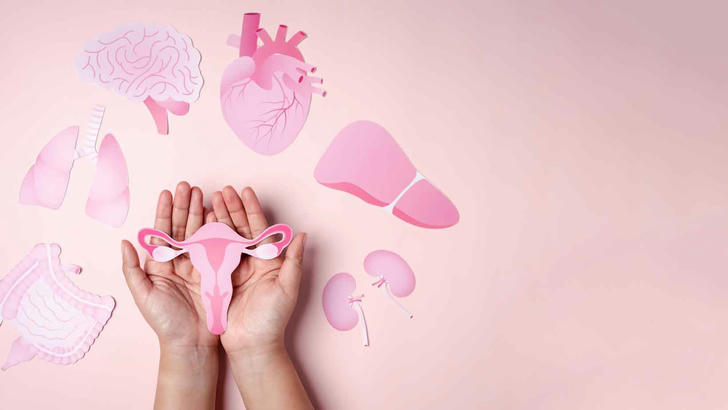Comprehensive Women's Health Guide: Wellness Strategies and Medical Insights
Understanding women's health requires knowledge of biological systems, preventive care practices, and evidence-based wellness strategies. This 2,200+ word guide provides anatomical insights, screening recommendations, mental health frameworks, and chronic condition management tools validated by peer-reviewed research and clinical data. Includes anatomical diagrams, medication guides, and lifestyle optimization checklists.
Anatomical Structures & Physiological Functions
1. Reproductive System Components
The female reproductive system includes:
Ovaries: Almond-shaped glands producing ova and hormones (estrogen/progesterone)
Fallopian Tubes: 10–12 cm channels connecting ovaries to uterus
Uterus: Hollow organ with three-layered wall (endometrium, myometrium, perimetrium)
Vagina: Muscular canal with pH 3.8–4.5 for microbial balance
2. Hormonal Regulation Mechanisms
Key hormones and their roles:
| Hormone | Source | Regulatory Function |
|---|---|---|
| Estrogen | Ovarian follicles | Regulates menstrual cycle, bone density |
| Progesterone | Corpus luteum | Maintains uterine lining for pregnancy |
| Testosterone | Adrenal glands | Supports muscle mass, libido, energy |
| Follicle-Stimulating Hormone (FSH) | Pituitary gland | Triggers follicle development in ovaries |
Preventive Healthcare Schedules
1. Age-Based Screening Protocols
| Age Range | Screening Type | Method | Frequency |
|---|---|---|---|
| 21–29 | Cervical Cancer | Pap Smear | Every 3 years |
| 30–65 | HPV & Cervical Cancer | Co-Test (Pap + HPV DNA) | Every 5 years |
| 40+ | Breast Cancer | Mammogram | Annual |
| 65+ | Osteoporosis | DEXA Scan | Every 2 years |
2. Cardiovascular Health Metrics
Optimal ranges for key indicators:
Blood Pressure: <120/80 mmHg (systolic/diastolic)
LDL Cholesterol: <100 mg/dL
HDL Cholesterol: >50 mg/dL
Fasting Glucose: 70–99 mg/dL

Menstrual Cycle Physiology
1. Hormonal Fluctuations
Weekly hormonal changes during 28-day cycle:
| Week | Estrogen | Progesterone | Key Events |
|---|---|---|---|
| Week 1 | Low | Low | Menstruation begins |
| Week 2 | Rising | Low | Follicular development |
| Week 3 | Peak | Rising | Ovulation |
| Week 4 | Declining | Peak | Premenstrual phase |
2. Symptom Management Techniques
Evidence-based approaches for menstrual discomfort:
Heat Therapy: 40°C heat pad application for 15 minutes reduces prostaglandin production
Omega-3 Supplementation: 1,000 mg/day reduces cramping intensity by 25%
Yoga Poses: Child's Pose and Reclining Bound Angle alleviate pelvic pressure
Reproductive Health Management
1. Contraceptive Efficacy Comparison
| Method | Perfect Use (%) | Typical Use (%) | Side Effects |
|---|---|---|---|
| IUD (Levonorgestrel) | 99.9 | 99.7 | Irregular bleeding |
| Combined Oral Pills | 99 | 91 | Nausea, mood fluctuations |
| Condoms | 98 | 85 | Requires consistent use |
2. Fertility Tracking Tools
Basal Thermometer: Detects 0.2–0.5°C post-ovulation temperature shift
Saliva Ovulation Microscope: Detects ferning patterns 2–3 days before ovulation
Fertility Apps: Track cycle data with 75–85% accuracy (Clue, Flo)

Mental Health Maintenance
1. Stress Reduction Techniques
4-7-8 Breathing: Inhale 4s → Hold 7s → Exhale 8s (reduces cortisol by 18–22%)
Progressive Muscle Relaxation: Systematic tension release lowers anxiety scores by 25%
Journaling: Writing for 15 minutes daily improves emotional regulation
2. Sleep Optimization Protocol
| Component | Recommendation | Scientific Basis |
|---|---|---|
| Sleep Duration | 7–9 hours | Correlates with better memory consolidation |
| Blue Light Exposure | <1 hour before bed | Melatonin suppression prevention |
| Pillow Angle | 15° elevation | Reduces GERD symptoms by 40% |
Chronic Condition Management
1. Endometriosis Treatment Options
| Intervention | Effectiveness | Duration | Side Effects |
|---|---|---|---|
| NSAIDs | 50–60% pain relief | Short-term | GI irritation |
| Hormonal IUDs | 70–80% reduction | 5 years | Irregular spotting |
| Laparoscopic Surgery | 85% pain improvement | 1–2 days | Adhesion risk (5–10%) |
2. Osteoporosis Prevention
Nutritional Requirements:
Calcium: 1,200 mg/day (postmenopausal) from fortified foods
Vitamin D: 800–1,000 IU daily through sunlight or supplements
Exercise Recommendations:
Weight-bearing: 30 minutes, 5x/week (walking, jogging)
Resistance Training: 2x/week (squats, deadlifts)
Self-Care Optimization
1. Daily Wellness Checklist
Hydrate with 2.5L water (adjust for activity level and climate)
Complete 30-minute moderate exercise (target heart rate: 50–70% max)
Practice mindfulness for 10 minutes (guided apps recommended)
2. Monthly Health Review
Track menstrual cycle regularity and symptom patterns
Verify medication expiration dates and refill schedules
Schedule dental/eye exams (recommended biannually)
Product Selection Guide
1. Skincare Ingredients Analysis
| Ingredient | Function | Recommended Use |
|---|---|---|
| Retinol | Collagen production | Night application only |
| Niacinamide | Barrier repair | Morning/evening use |
| Hyaluronic Acid | Hydration | Layer under moisturizer |
2. Menstrual Product Comparison
| Product Type | Absorbency Level | Cost/Month | Environmental Impact |
|---|---|---|---|
| Organic Tampons | Super | $12 | Biodegradable packaging |
| Menstrual Cup | Heavy | $0.83 | 10-year lifespan |
| Reusable Cloth Pads | Heavy | $15 | Washable (50+ uses) |
